God & the Left at Yale
The Rev. Robert Beloin sits against the marble wall of the Abraham A. Ribicoff Federal Courthouse in Hartford. Next to him, a line of men and women in suits, tie-dye shirts and clerical attire wraps across the front of the building, blocking the doors. The St. Thomas More priest’s own white collar peeks out from under a Yale-emblazoned vest.
It’s 8 a.m. on Monday, Sept. 25. The flagstones are still damp from the previous evening’s rain. Beloin, his fellow priest the Rev. Karl Davis, Yale history professor Jennifer Klein and 33 other protesters have gathered to support Franklin and Giaconda Ramos, both scheduled for deportation on the 29th. The Ramoses are at their jobs — it is the start of a workday for them, in some ways just like any other workday of the 24 years they have lived, paid taxes and raised a family in the United States.
The Ramoses’ two college-aged sons are there. At moments, the protesters lock arms, resting a 20-foot orange banner that reads “ICE Stop Your Ethnic Cleansing” against their knees. In front of them, a crowd of 200 supporters chants, “No borders, no nations. Stop the deportation,” and “If you don’t let us dream, we won’t let you sleep.”
“We had very clear instructions,” Beloin remembered about his arrest. “Do not resist, do not be dead weight, don’t be carried to the van.”
St. Thomas More graduate affiliate Catherine Rodriguez DRA ’18 alerted Beloin to the protest. “Pope Francis is saying, ‘Go to the periphery and accompany people,’” Beloin said. “Immigration is a way to go to the edges.”
In the days after the demonstration, a New York immigration judge reopened the Ramoses’ case, giving them a temporary stay of deportation. Though a federal judge issued an order of removal for the couple in 2005, immigration officials did not act on the ruling until Trump-era enforcement protocol took effect. “The tone of anger and hatred and ‘us against them’ is really taking a toll on the moral fiber of the country,” Beloin said.
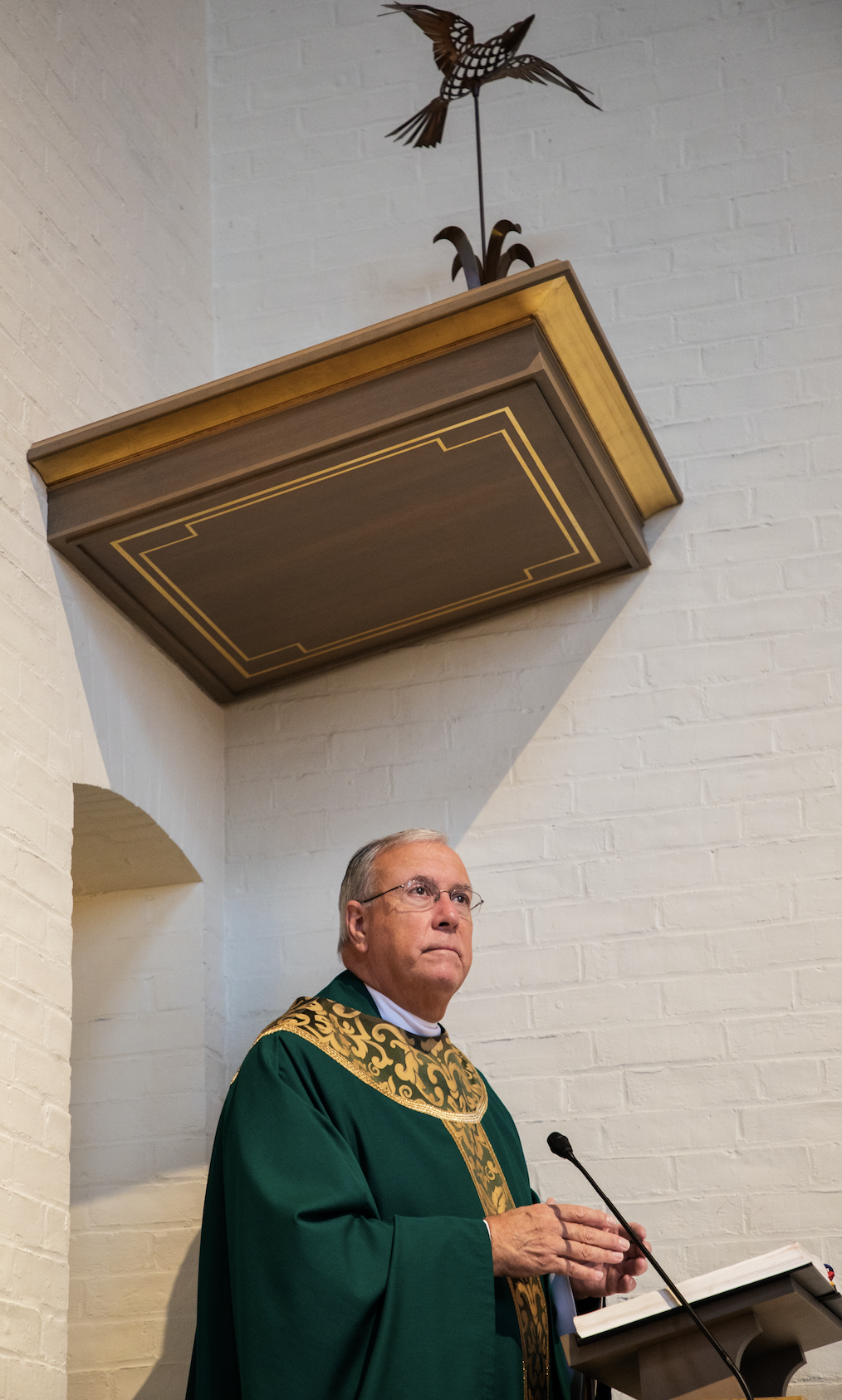
(Robbie Short)
The St. Thomas More priests’ intervention places them among an emerging community of Yale activists called by their religious convictions to take progressive action. Organizations like the Yale Black Seminarians, the Muslim Students Association and the Chaplain’s Office are working to promote social justice in the Trump era. Though religion is often overshadowed by politics at a largely secular institution like Yale, a recent surge in faith-based political activism revealed the complex — and storied — relationship between theology and liberal activism on campus.
For Beloin, these ideas find expression through prayer: at the pulpit, in front of the courthouse and in his holding cell during his daylong stay in jail.
When the protesters arrived at the correctional facility at around 11 a.m., they were each fingerprinted and asked to turn in their possessions. Beloin handed over his wallet, phone, keys and, finally, the clerical collar from around his neck.
On the national stage, conservative religious activism has long eclipsed its liberal counterpart in American politics and media. White evangelical Christian voters have been the Republican Party’s base since President Richard Nixon’s term in office. Although there are significant political disagreements among different right-leaning Christian communities, Christians overwhelmingly vote Republican. In the 2016 presidential election, Christians voted for Trump by a margin of 15 percent, and evangelicals favored Trump by a margin of 64 percent, according to a Pew poll. Yet, as Latino Catholic and Arab Muslim communities come under threat of immigration restrictions and political vilification, the religious left is garnering grassroots support.
The Hartford rally was one of a series of progressive political actions taken by religious leaders across the country in past months. Just three weeks after Trump’s election, the Rev. William J. Barber II led an 80,000-person “Moral March” in Raleigh, North Carolina, mobilizing a national network of interfaith leaders and earning the title of the “strongest contender for [Martin Luther King Jr.]’s mantel” from many supporters, according to The New York Times. In protest of a white supremacist rally in Charlottesville, Virginia, faith leaders linked arms and marched silently through the city.
Just a few weeks later, on the Aug. 28 anniversary of the March on Washington, the Rev. Al Sharpton led the multifaith One Thousand Ministers March for Justice rally along the path of the 1963 march. Wearing clerical collars, yarmulkes and vestments, the demonstrators protested Trump’s racial politics in the wake of the violence in Charlottesville.
Yale has seen a parallel increase in liberal religious activism in recent times, but this movement is not without precedent. Progressive icon and Yale Chaplain William Sloane Coffin Jr. ’49 DIV ’56 leveraged his religious authority on campus to promote anti–Vietnam War and civil rights causes. Though the student body may no longer recognize his name, Coffin’s influence persists.
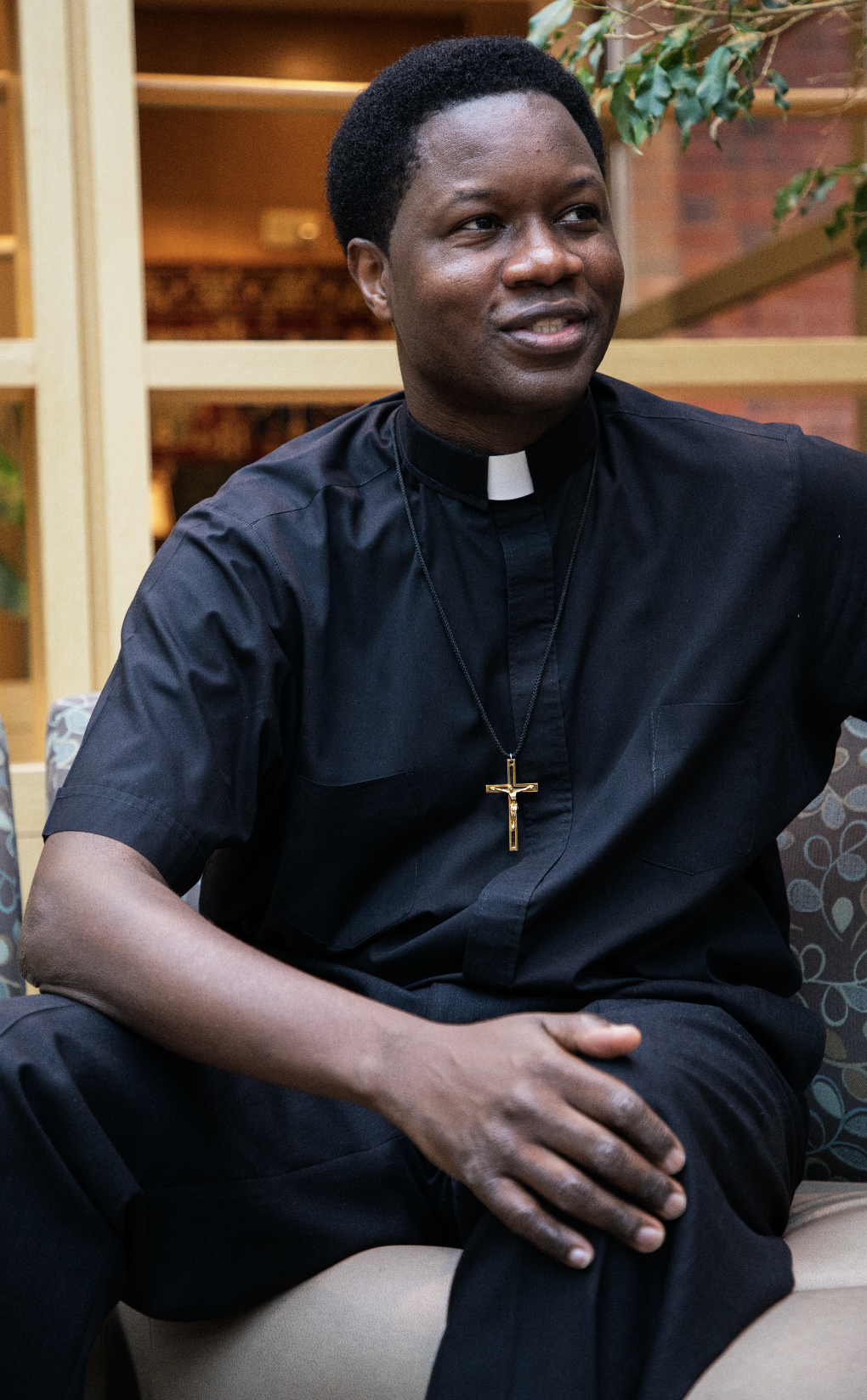
(Robbie Short)
Coffin’s Pulpit
On Oct. 2, 1967, Coffin stepped up to the lectern at an anti-war press conference in New York City. Yale’s Battell Chapel, he announced, would be “a sanctuary from police action for any Yale student conscientiously resisting the draft.” Following the speech, nearly 300 draft resisters burned or turned in their draft cards to Coffin in an act of collective civil disobedience. A New York Times article about the announcement ran under the headline, “War Foes Are Promised Churches as Sanctuary.” A Yale Alumni Magazine article later observed that Coffin’s Oct. 2 address cemented Yale as the center of the draft resistance movement in New England.
Yale faced an onslaught of incensed calls from alumni even as Yale President Kingman Brewster ’41 denounced Coffin’s speech. Brewster reminded Coffin that Battell was under the authority of the administration, not the chaplaincy; the chapel was not his to give away.
By age 40, Coffin had been arrested three times, including one instance in which he was arrested while leading a Freedom Ride to protest segregation in Alabama. When the New Haven trial of Black Panther Party co-founder Bobby Seale brought thousands to the city, Coffin led a student–faculty committee tasked with keeping the protests nonviolent. Though he twice graced the cover of Time magazine and never faded from the national public consciousness, Coffin was most visible on campus arguing with students, as he tirelessly sought to change minds one at a time.
Coffin’s friend and former University Secretary Henry “Sam” Chauncey Jr. ’57 laughed as he said, “I don’t know anybody to this day who thinks they are entitled to march into the president’s office and just go right in without permission or anything else, right in the middle of a meeting or whatever, but he would just go right in. He would come in and say, ‘Damn it, Kingman, you can’t let this happen!’”
Confrontation was Coffin’s style. Chauncey remembered that Coffin once walked into a fraternity house unannounced during the group’s officer elections to interrogate the students about why they weren’t electing black leaders. He leveraged his oratory to rail against the old-boy-network attitude that still pervaded campus.
“In a world in which traditions need to be reshaped and purged as much as protected to support what we already hold, O God, bless us all with uncertainty,” Coffin said at a luncheon in celebration of Brewster’s inauguration as University president. As Yale shifted from an elite white Protestant school to a more progressive, diverse and pluralistic place, Coffin was an unapologetic advocate for reform.
The cultural context of Coffin’s time at Yale makes his faith-based activism even more striking. The 1970s were a time of decreasing religious engagement on college campuses. Amid an anti-authority cultural revolution, religion had fallen by the wayside. The deep and seemingly inalterable connection between tradition and religion would create a tension that generations of progressives before and after Coffin struggled to reconcile.
Yet Coffin was an uncompromising revolutionary. Drawing on the Protestant Reformation as a parallel to the civil rights movement, he liked to quote Martin Luther: “My conscience is captive to the word of God. … To go against conscience is neither right nor safe. Here I stand. I can do no other,” Coffin repeated. “God help me.”
(Courtesy of Arnold Gold/Heart Connecticut Media)
Revolutionizing, again
Professor Jennifer Klein was standing near Jason Ramos, the Ramoses’ eldest son, the morning of her arrest. As a historian of social movements, she noticed what others might have missed: The rally did not focus solely on Christian prayer, even though, 15 years ago, a similar protest would have. “The language has become more ecumenical,” she said.
For Klein, Trump’s incendiary rhetoric on immigration echoed anti-Semitic chants by neo-Nazis at her alma mater, the University of Virginia. A threat to Latino Americans is a threat to every historically marginalized group, she said. Collective action — the concept that links her most closely to the other religious leaders involved in the protest — is a moral imperative of Judaism for Klein. “Tikkun olam,” the religious duty to work collectively to “repair the world,” underpins her beliefs.
Nine months earlier, repair work on campus was focused on those in the Yale community affected by Trump’s travel ban. The ban targeted seven predominantly Muslim countries. Abrar Omeish ’17, former president of the Muslim Students Association, helped coordinate the January rally in support of affected Yalies.
“The purpose was showing unity,” Omeish said of the Jan. 29 rally, which was led by a group of organizers that included members of the Women’s Center, the Slifka Center for Jewish Life and the Yale Democrats. “It needed all of the student groups involved to fulfill that purpose.”
The student organizers projected the word “solidarity” onto the stone facade of Sterling Memorial Library. About 1,000 people attended, holding candles and standing in silence until a series of speeches spurred the crowd into chants. For Omeish, the power of the rally rested in a “faith-based model of activism.”
Selflessness and humility before God guided the organization of the rally. “It was successful because of the blessing of God,” she said. Only by approaching the rally with a focus on the issues, rather than grandstanding or self-promotion, could the event fulfill its purpose: “bridge-building across these communities who feel marginalized and alienated.”
The night of the rally, Associate Chaplain Maytal Saltiel was busy “schlepping,” as she affectionately called it. Saltiel is practiced in the logistics of event organizing; she held the official title of “repair the world coordinator” while working at the University of Pennsylvania Hillel. Last January, she was one of the few people who could find power outlets and a sound system for the rally. “We are the behind-the-scenes people,” Saltiel joked.
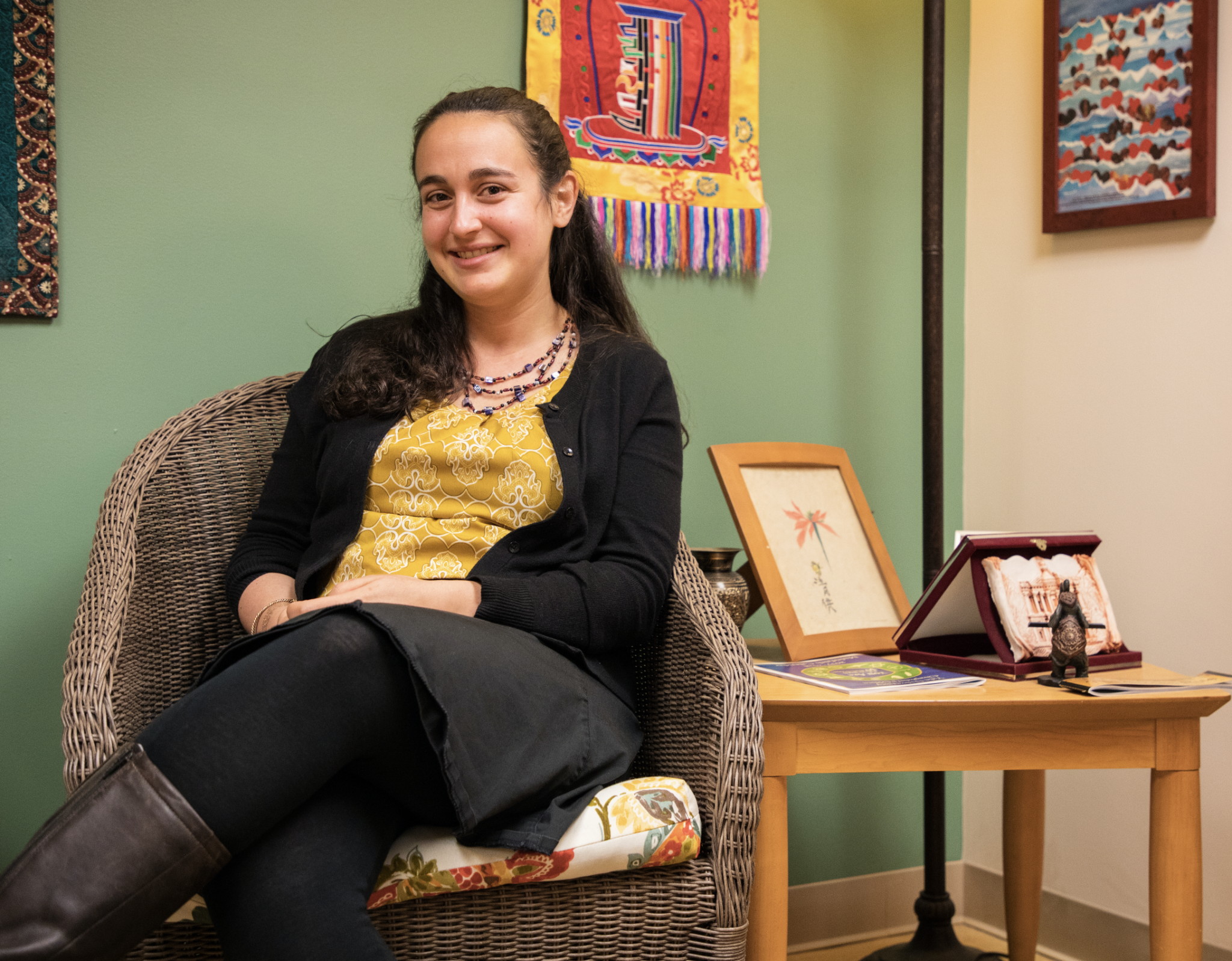
(Robbie Short)
The Chaplain’s Office has weathered its own turbulent political moments over recent years. In October 2015, University Chaplain Sharon Kugler found herself at the center of a national controversy. Kugler, acting as a member of the Intercultural Affairs Council, co-signed an email to the Yale student body about cultural appropriation in Halloween costumes, asking students to “avoid those circumstances that threaten our sense of community or disrespects, alienates or ridicules segments of our population based on race, nationality, religious belief or gender expression.”
The directors of the Afro-American Cultural Center, Native American Cultural Center, La Casa Cultural, Asian American Cultural Center and Slifka Center co-signed the letter. Within a week, Associate Master of Silliman College Erika Christakis sent out a response challenging the basis for labeling costumes appropriative and affirming “freedom of speech.” As protests escalated, reporters from national news outlets descended on campus.
“That semester set us on a course of trying to figure out how to listen to each other better,” Kugler reflected. She said she did not regret sending out the email. But she emphasized the importance of dialogue amid political controversy, perhaps directing her comment at the alienation and pain many on campus felt during the semester-long period of protests. “It’s an office that attempts very delicately to keep people talking and to feel accessible to everyone. The prophetic voice that is found in accompaniment and radical hospitality and a kind of endurance.”
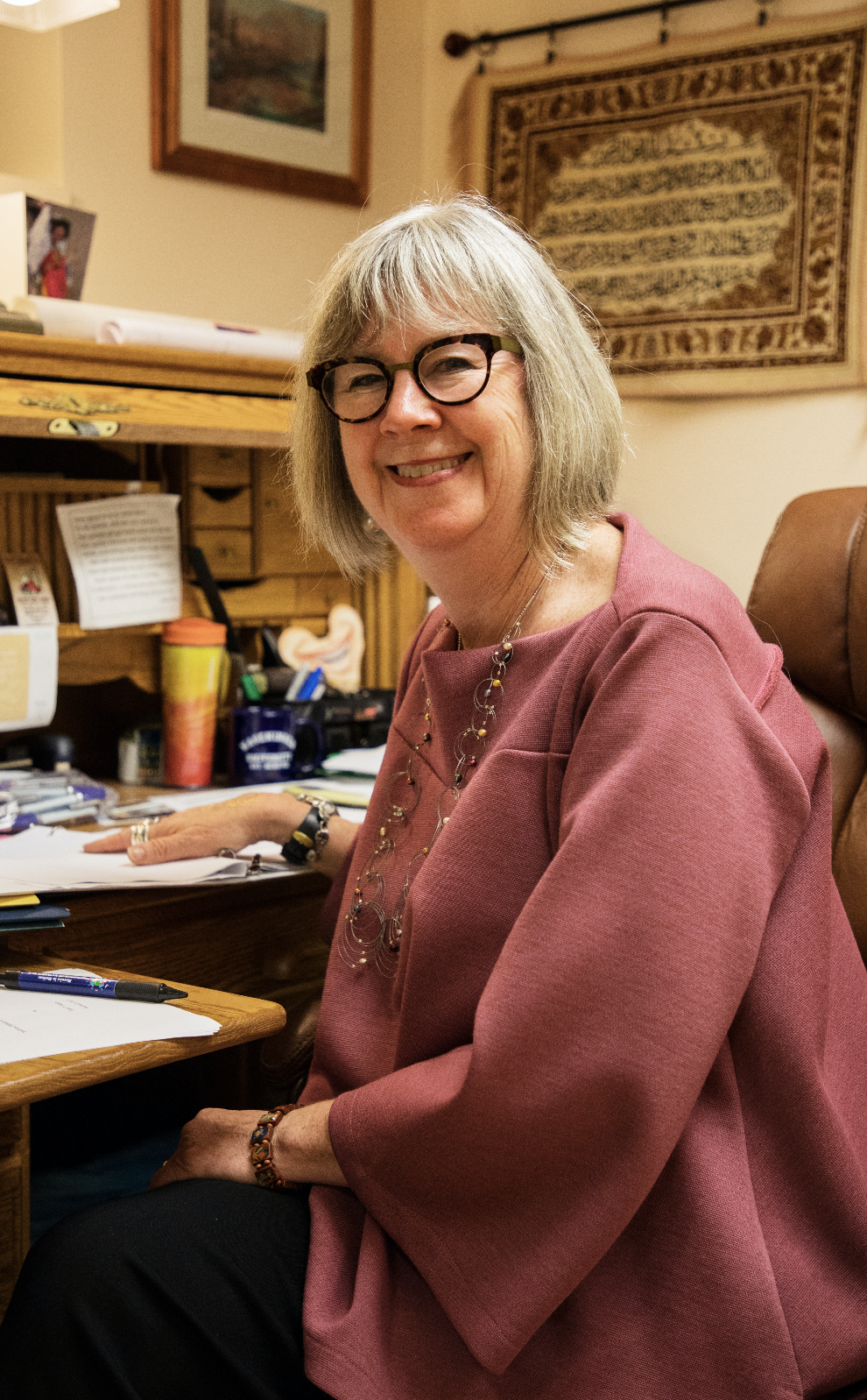
(Robbie Short)
Kugler and Saltiel, in some ways, are the new, pluralistic continuation of Coffin’s legacy. The chaplaincy, when it was first created in 1927, was intended for one person, the campus pastor. When Coffin was appointed in 1958, the Chaplain’s Office had hardly changed — his voice was the prophetic one. Over time, the staff expanded, adding a Jewish associate chaplain in the ’80s as well as Muslim and Hindu staff members in the mid-2000s.
Today’s chaplaincy comprises Catholic, Protestant and Jewish chaplains as well as Muslim and Hindu directors of student life. With this new pluralism, its voice is diffused among many chaplains.
As outspoken as Coffin was, the chaplaincy today takes a much more subtle tone on social justice. “It’s no longer the case that the chaplain assumes the role of standing at the pulpit and having the prophetic voice be that one voice,” Kugler said. “I think if Coffin were alive today, he would probably be among us.”
Liberal Divinity
Coffin spent three years on the Sterling Divinity Quadrangle, where his legacy persists in the Divinity School’s activist student body. Much like the College, the Divinity School has a slew of liberal-minded student organizations: the LGBTQ group DivOut; FERNS, an environmentally focused group; and Peace, Action and Justice, a race-focused social action group. The organizations tackle social issues both in preparation for ministry and advocacy work at large.
Attending the Divinity School is often just as much about social history as it is about theology. Qadry Harris DIV ’18, a member of the Yale Black Seminary, grew up going to a black Baptist church in the Bronx. His studies center on radical scholarship in religious academia.
“Black religion in the Americas begins with antebellum chattel slavery,” Harris explained. “It’s not a secret that white slave masters were using Christianity to justify slavery.”
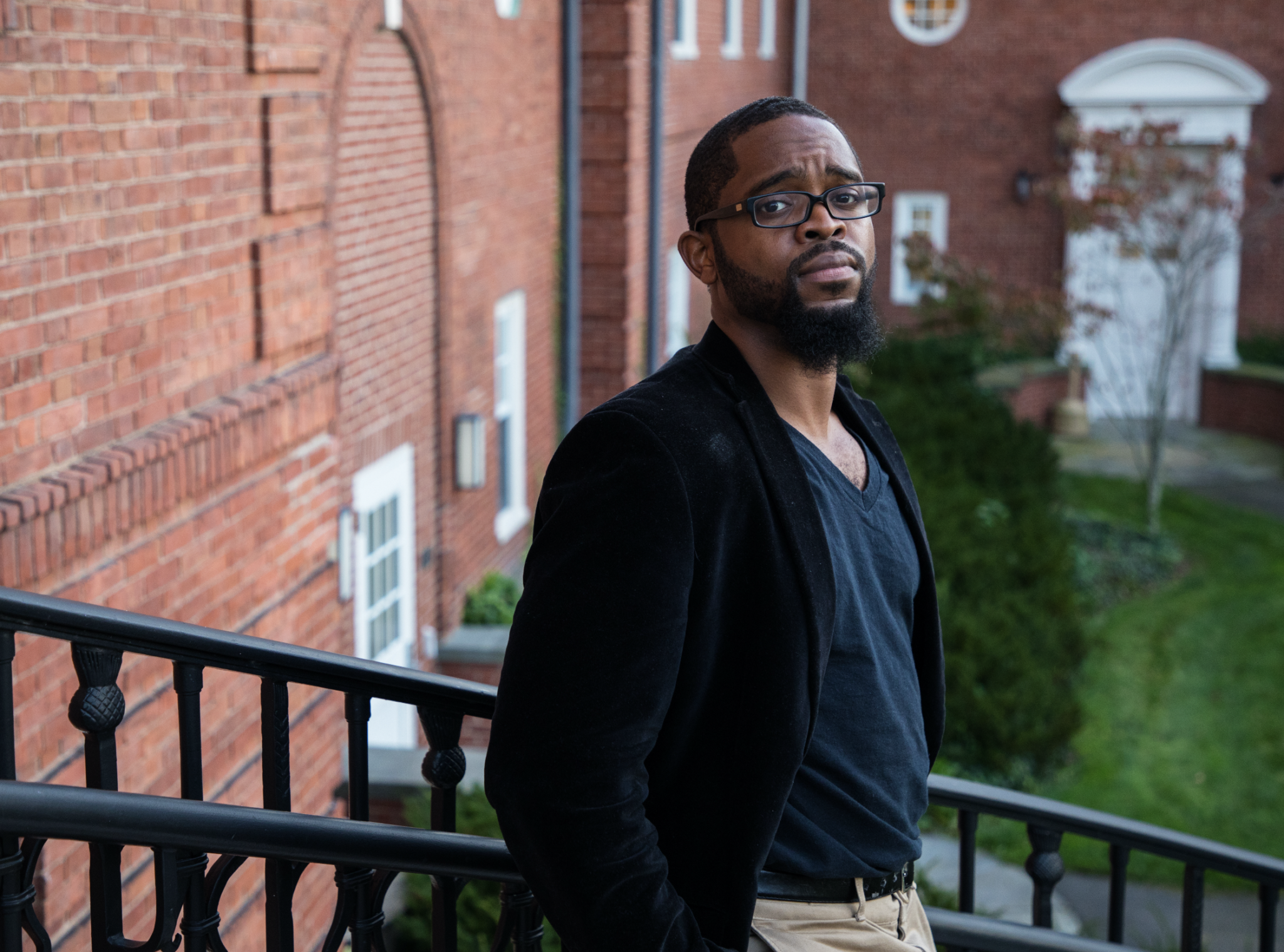
(Robbie Short)
Harris sees a racial divide in American religion. On one side stands the slave master’s religion of oppression and, on the other, the religion of liberation and resistance developed by slaves to subvert slave-master Christianity. Harris explains today’s Christianity in terms of its past: Enslaved people “started appropriating Christian symbols to say, ‘God wants me to be free.’” Social justice, for Harris, is the inevitable consequence of faith in something larger.
“The Black Lives Matter movement — these protestors and activists are responding to the Trayvon Martins of the world,” Harris said. “There are those that would assert that Black Lives Matter has absolutely nothing to do with the Christian gospel and the church. I’m of the opposite opinion. It is a manifestation of the church because it is people of the church fighting to protect our personhood.”
When asked how he reconciles his Christianity with the religion of oppression from which he believes it is descended, he said, “I don’t know if reconciliation is the right way to put it.” Harris acknowledged that his faith is not unimpeachable and that even the black Baptist tradition has internalized elements of dominance and suppression, though those influences are difficult to identify. His black liberation politics bears the marks of a religion that was once an instrument of oppression, and that does not sit easily with him.
The culture of the Divinity School lends itself to radical action. In fall 2017, Divinity School Dean Greg Sterling introduced “Religion and Ecology” and “Latinx and Latin American Christianity” as new concentrations of study. Earlier this year, the school also announced plans to construct the “regenerative village,” a highly energy-efficient residential complex designed to dramatically reduce waste.
(Courtesy of Sam Chauncey, Jr.)
Julia Johnson DIV ’18 and Emily Bruce DIV ’19 run Faith, Environmentalism, Religion, Nature and Spirituality, or FERNS, the religious ecology student group at the Divinity School. Johnson, a nondenominational Protestant, and Bruce, a Unitarian Universalist, both regularly attend programming at the Yale School of Forestry. One event last spring, a film festival, convinced Johnson to discard her trash bin and practice a zero-waste lifestyle.
“A lot of my energy goes to thinking about how the church doesn’t talk about climate change,” Bruce said. Johnson also expressed frustration that, even at Yale, faith leaders do not recognize the religious importance of environmental stewardship. Climate change is something “that’s very Christian and very political.”
Despite Johnson’s frustration with religious leadership on environmentalism at her school, divinity schools at elite secular universities like Yale and Harvard are much more liberal than their counterparts at other institutions. According to several Yale Divinity School students, Yale’s liberalism derives from the University’s broader secular liberal tradition; the College and the graduate and professional schools have attracted a liberal student body since the ’60s. Saltiel, the associate chaplain, attended Harvard Divinity School and said that Yale and Harvard are two of the most pluralistic of their kind.
Not every religious school focuses on social history the way that Yale Divinity School does. At most Southern and Midwestern theological schools, the political outlook is different. In a 1995 Atlantic article exploring Regent University in Virginia, Harvard Divinity School professor Harvey Cox characterized the mission of the school: to produce an “elite of religiously trained professionals to exert a spiritual influence on the secular realm.” He described a series of op-eds in the campus newspaper debating the extent to which Christians have a right to dominion over society. Cox argued that the school was a microcosm of debate within conservative Christian communities at large.
Mike Lally DIV ’18 attended St. Louis University, a Jesuit Catholic school whose curriculum is centered on theology. Lally seemed bemused by the Yale Divinity School’s liberalism. The Divinity School, he said, is “basically a liberal secular institution with some Christian language tossed on top.”
A Place in the Tradition
On a rainy Sunday in October, Lally stood near the steps of the altar at St. Thomas More, offering communion with two other parishioners and Beloin. Two lines of congregants proceeded toward them. Earlier during the service, Beloin preached about change in the Church over time. It was the Sunday before the 500th anniversary of the Protestant Reformation, and Beloin joked that, if Martin Luther were alive today, he would find a place in today’s more grounded Catholic faith.
He delivered a homily about neighborly love and the importance of putting aside differences to find consensus. He cited the case of the Ramos family. It is hard to take action from a place of comfort and privilege, he said, but love of God is parallel to love of neighbor, so we must act. Quoting from the daily liturgy, he added, “You shall not wrong any alien, for you were once aliens yourselves in the land of Egypt.’”
The quotation harkens back to the prophet Moses, who claimed the divine authority to free the Israelites, restructure society and make political demands to the pharaoh. Similarly, Jesus was crucified in part for being a political threat, and Muhammad was nearly assassinated by the Meccans for upending the existing social order. Revolutionary change is a fundamental element of every prophet’s story.
The theologies founded around these figures have taken on a life of their own. Religions created millennia ago have continued to shape the many societies within which they thrive, impacting the daily experience of each individual.
Struggling with the inertia of their religious traditions was one of the things that prompted Saltiel and Kugler to take positions working at a university, where they would interact and collaborate with campus activist culture. Saltiel reflected that her understanding of patriarchy in religion once prompted her to question the role of feminism within faith. Women struggle against religious institutions that are just as patriarchal as the broader societies that they inhabit, she said. There has always been a kind of friction between religious tradition and the social change these activists fight for.
But this kind of wrestling is a motivating factor as often as it is an alienating one. The stakes of social change are higher when considered in an explicitly religious context. Though it is often impossible to tell where religious doctrine ends and cultural custom begins, religious activism is just as much about grappling with religious issues as it is social ones. Especially as Yale’s liberal religious activists navigate a campus that is increasingly secular — more than half of Yale’s students are religiously unaffiliated — contemplating the role of their faith gives language and power to their activism.
Coffin was notable for his backstory. He was the third generation of his family to attend Yale and the heir to a family fortune. “His wealth always hung over him,” Chauncey said. He spent his life at elite institutions: Phillips Academy Andover, Yale College, the CIA, Williams College, Yale Divinity School and the Yale chaplaincy. Yet he worked tirelessly to change the institutions that produced him.
Over the past six decades, aspects of Coffin’s vision have come to pass: Yale has become more pluralistic, and Christianity at large has adapted to socially progressive trends. Over the course of his life, Beloin has seen a version of this change in the Catholic faith: “I look for times when the Church gets it right, I am inspired by that,” he said. “And when I think the Church gets it wrong, I try to learn from that.”
For Beloin, morality is too connected to social issues for him to stay aloof. His views demand that, while he stands above the congregation at his pulpit on Sunday, he also sits down in front of the doors of the Hartford courthouse and stoops to pick up trash during his court-ordered 24 hours of community service.
He remembered, “When I was walking down to the corner to be fingerprinted, one of the cops walking with me turned to me and said, ‘Hey Father, it wasn’t worth it, was it?’ I looked at him and I said, ‘Well as a matter of fact, it was.’”
At the Hartford jail, police put the protesters into two-person cells. Each cell had a bunk bed and an exposed toilet. Its walls were brick. Everything in the cell was nailed down, and Davis remembered empathizing with those threatened by deportation. In his loss of freedom, he experienced “just a fraction of what they experience.” His only lifeline was the lawyer’s phone number written in permanent marker on his forearm.
Beloin was placed with Pentecostal Elder Ron Hurt, who preaches at Deliverance Temple Church in New Haven’s Hill neighborhood. The church sometimes takes in people with addictions, helping them on the path to recovery. It owns a house next door where people looking for shelter can stay. Hurt has preached and done advocacy work in the neighborhood for 12 years.
“We talked for quite a while about our different experiences of faith and church and why we were there,” Beloin remembered. They discussed poverty, the voiceless and their congregations. They stretched out on their beds, Hurt in the top bunk and Beloin in the bottom. Privately, Beloin contemplated the Exodus narrative of the widow, the orphan and the alien. They prayed.

